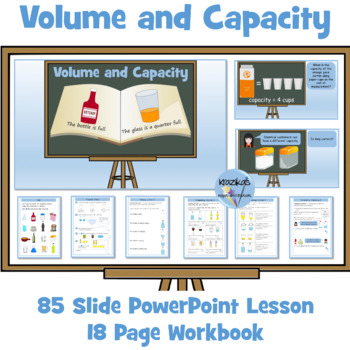Capacity and Volume
- Zip
What educators are saying
Products in this Bundle (2)
Description
This resource contains an 85-slide PowerPoint lesson and an 18-page workbook on volume and capacity.
Volume and Capacity PowerPoint Lesson
The PowerPoint contains explanations and tasks (concrete, pictorial and abstract) with an emphasis on the mastery approach to learning advocated by the White Rose scheme and includes reasoning and problem-solving tasks.
The resources have been designed to achieve the following outcomes:
- Understand the meaning of capacity
- Understand the meaning of volume
- Understand the difference between capacity and volume
- Describe capacity and volume: for example - full/empty, more than, less than, half, half full, quarter full
- Compare capacity and volume
Volume and Capacity - 18 Page Workbook
This resource contains an 18-page workbook (18 worksheets) on capacity and volume. The worksheets contain tasks (concrete, pictorial, and abstract) to achieve the outcomes outlined above. An information sheet and answers are also included.
Keep informed of new resources by following me here.





